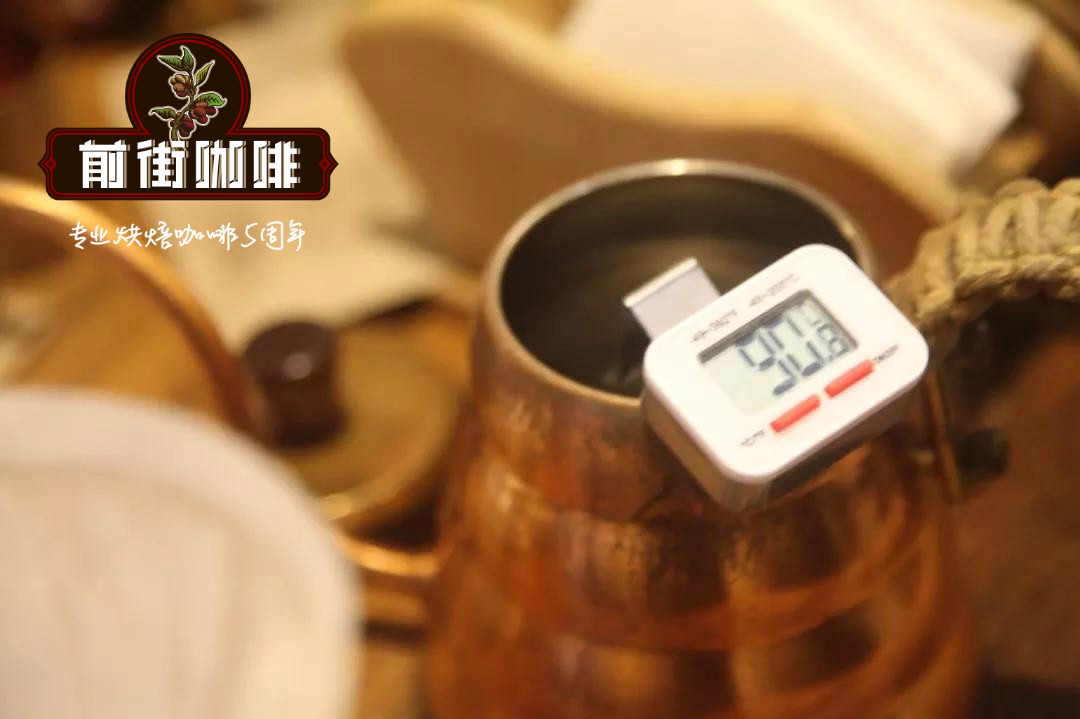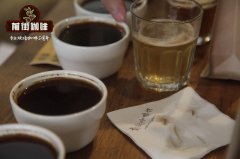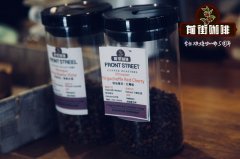Coffee Queen Hawaiian Coffee producing area Coffee Bean grading introduction to how to brew Hawaiian Coffee

Professional coffee knowledge exchange more coffee bean information please follow the coffee workshop (Wechat official account cafe_style)
01 | Preface
Hawaii is the only coffee producing area located in developed countries, although the altitude is not high, but because of the special island climate, the quality of the coffee produced here is not low.
Coffee was first introduced to Hawaii in 1817 by Don Francisco de Paula Marin, the first Spanish consultant during the reign of King Kamehameha. But it was not planted until 1825 when Oahu Mayor Chie Boki introduced coffee from Brazil and successfully planted it in Manoa Valley, and coffee was grown all over the island.
Bourbon coffee was introduced to the Big Island around 1828 and began to be grown on a large scale on the island of Kauai in 1836, but it was wiped out by diseases and insect pests in 1858, and the only one who survived was the KONA producing area of the island.
02 | production area description
Hawaii has an island climate, where the temperature does not change much throughout the year, but there is a large temperature difference between day and night, and there are enough clouds to block the sun. Although the average elevation of coffee producing areas is not very high, the quality of coffee produced here is not low due to Hawaii's special island climate and fertile volcanic soil.
MAUI ISLAND
MAUI has a large coffee garden, Ka'anapali, which is divided into small plots, but coffee is produced centrally. The estate was a sugar cane plantation from 1860 to 1988 and was later converted into a coffee plantation.
Altitude: 100-550 m
Harvest time: September-January of the following year
Variety: Kaduai, Kaddura, Ironka, Mocha
WAIKAPU,MAUI ISLAND
This area can be regarded as a relatively young coffee producing area in Hawaii, and the only coffee garden in the area is owned by a company located on the neighboring island of MOLOKAI.
Altitude: 500-750 m
Harvest time: September-January of the following year
Variety: iron pickup, Kaduai
KAU,BIG ISLAND
It was not planted until the sugar cane processing plant was closed in 1996, and before 2010, coffee cherries produced here had to be processed in neighboring areas, such as PUNA or KONA, but now a local processing plant has been built, so local people do not have to take coffee cherries to other places for post-processing.
HAMAKUA,BIG ISLAND
Coffee was grown here in 1852, and there were originally eight plantations. like other producing areas in Hawaii, the coffee industry began to decline because of the prosperity of the sugar industry, but coffee has been grown here since the mid-1990s.
Altitude: 100-600 m
Harvest time: August-January of the following year
KONA,BIG ISLAND
The popularity of Hawaiian coffee mainly comes from this producing area, which is different from other producing areas in Hawaii, where coffee cultivation is more diversified. There are more than 630 coffee plantations producing coffee, mostly covering an area of less than 2 hectares. It is usually run by different families.
The west and south of here are famous for their KONA coffee, which is between 800m and 1100m above sea level, which is the most suitable environment for coffee trees to grow. As a result, the slopes of Horala and Mauna are covered with coffee trees.
The unique natural environment of KONA region has given birth to Arabica coffee, which promotes it to become the plantation with the highest coffee production in the world. Not only the quality is guaranteed, but also the coffee cultivated under the unique growth environment and climate is more fragrant.
The coffee beans grown in KONA area are very good-looking, full in shape and bright in color, and are known as "the most beautiful coffee beans in the world".
03 | Coffee rating
KONA coffee beans are mostly classified according to bean size, which can be divided into four grades, which are the most advanced Extra Fancy, Fancy,Prime and Gr. No.1 et al. It is also divided into Type1 and Type2.
Type1 is a standard coffee bean that contains the largest Kona Extra Fancy, followed by ratings from large to small: Kona Fancy;Kona Select and Kona Prime.
Type2 is an exclusive small round bean, including two grades of Kona Number 1 Peaberry and a smaller Kona Peaberry Prime.
04 | handling method
Hawaii is mainly water washing. The biggest difference from the sun method is the use of fermentation to remove the pectin layer. After completing the fermentation and removing the pectin, the coffee beans will be cleaned again because the fermentation bacteria and impurities will remain on the coffee beans. In order to clean, this step will consume a lot of water, and then the fruit will be dried and shelled.
Hawaii's clean and sweet mountain spring water provides the ideal conditions for washing, which creates the bright appearance and pure and fresh taste of Kona coffee beans. The washed coffee beans are placed on a huge plate and dried naturally by the sun.
05 | Coffee culture
Every November, the Kona region of the Big Island of Hawaii hosts the Hawaiian Kona Coffee Culture Festival (Kona Coffee Cultural Festival) to celebrate the harvest of Hawaiian Kona coffee beans (Kona Coffee) and commemorate the 180-year-old tradition of Hawaiian coffee beans. During the nearly 10-day event, more than 40 coffee culture and competitive activities will be held in Hawaii, Big Island and Oahu to popularize Kona coffee knowledge and give tourists around the world a chance to get close to Hawaiian Kona coffee beans.
| 06 | recommended for cooking |
Take the KONA of Queens Farm in Hawaii as an example, using V60 filter cup, 90 degrees water temperature, BG 5R (60% of China's No. 20 sieve pass rate).
Technique: first steaming with 30 grams for 30 seconds, slowly injecting water to 120 grams in sections, and finally injecting water to 225 grams at the end of cooking. The time for steaming starts at about 2 minutes.
Flavor: malt, mulberry, jackfruit and caramel sweet for a long time.
Related recommendation: Hawaiian kona Kona Coffee introduces how to brew Hawaiian Kona Coffee
Important Notice :
前街咖啡 FrontStreet Coffee has moved to new addredd:
FrontStreet Coffee Address: 315,Donghua East Road,GuangZhou
Tel:020 38364473
- Prev

Hawaiian Coffee introduction Hawaiian KONA Kona Coffee flavor description
Professional coffee knowledge exchange more information about coffee beans Please follow the coffee workshop (Wechat official account cafe_style) Hawaii (Hawaii) after nearly two centuries of efforts to grow coffee, the term Kona has almost been equated with "quality". Hawaii has superior growing conditions, but historically, coffee trees have been planted since 1825 AD.
- Next

Study on the taste and flavor of Hawaiian Kona coffee
Professional coffee knowledge exchange more coffee bean information please follow the coffee workshop (Wechat official account cafe_style) Hawaii KONA Hawaii Kona 01 | production profile in Hawaii (Hawaii) after nearly two centuries of efforts to grow coffee, the term Kona is almost synonymous with "quality". But historically, since 1825, coffee trees have been the first.
Related
- Detailed explanation of Jadeite planting Land in Panamanian Jadeite Manor introduction to the grading system of Jadeite competitive bidding, Red bid, Green bid and Rose Summer
- Story of Coffee planting in Brenka region of Costa Rica Stonehenge Manor anaerobic heavy honey treatment of flavor mouth
- What's on the barrel of Blue Mountain Coffee beans?
- Can American coffee also pull flowers? How to use hot American style to pull out a good-looking pattern?
- Can you make a cold extract with coffee beans? What is the right proportion for cold-extracted coffee formula?
- Indonesian PWN Gold Mandrine Coffee Origin Features Flavor How to Chong? Mandolin coffee is American.
- A brief introduction to the flavor characteristics of Brazilian yellow bourbon coffee beans
- What is the effect of different water quality on the flavor of cold-extracted coffee? What kind of water is best for brewing coffee?
- Why do you think of Rose Summer whenever you mention Panamanian coffee?
- Introduction to the characteristics of authentic blue mountain coffee bean producing areas? What is the CIB Coffee Authority in Jamaica?

